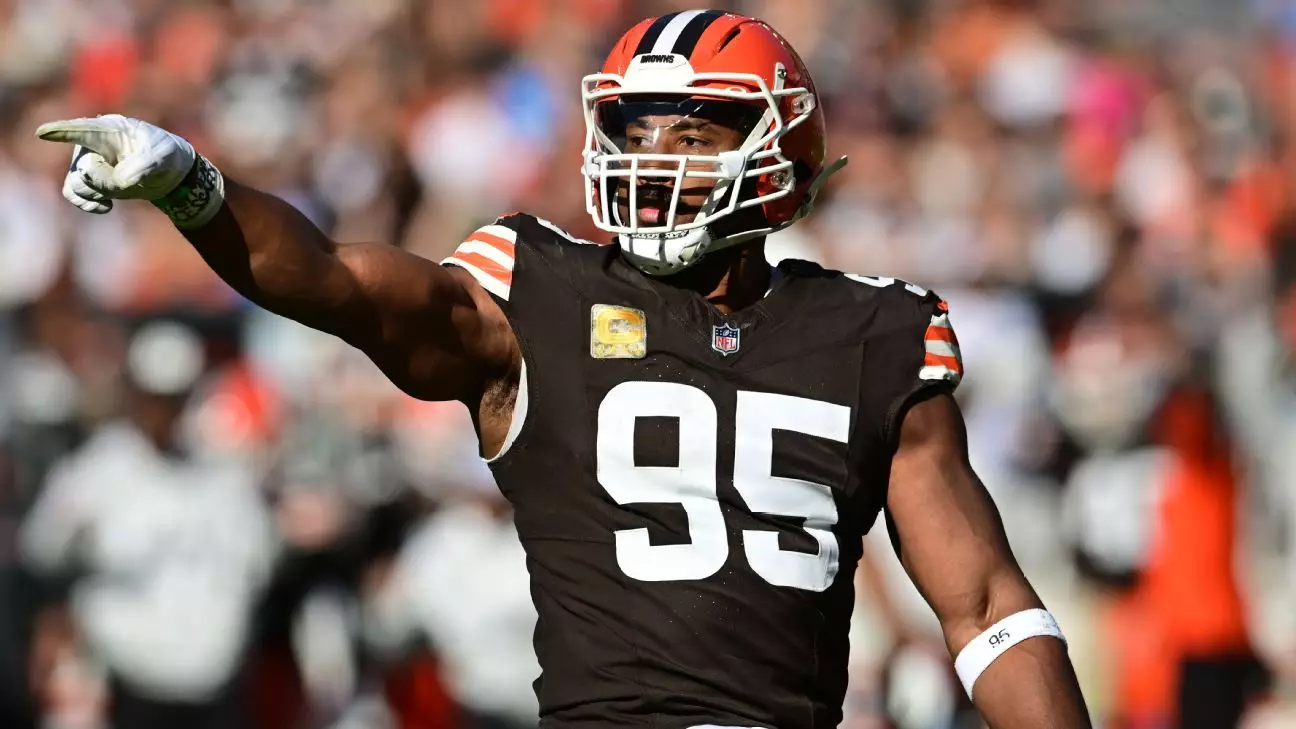Myles Garrett, the current NFL Defensive Player of the Year and cornerstone of the Cleveland Browns’ defense, has sent shockwaves through the football community by publicly requesting a trade. This development highlights a growing rift between talented players and franchises grappling with consistent underperformance. Garrett’s statement reflects a deep-seated yearning for success and fulfillment, perfectly encapsulated in his words: “The goal was never to go from Cleveland to Canton, it has always been to compete for and win a Super Bowl.” This sentiment brings forth the complex realities of professional athletics, where individual aspirations often clash with organizational challenges.
The situation has escalated following a disheartening 3-14 season, marking yet another episode in a series of struggles for the Browns. Garrett has expressed frustration over the team’s direction, especially after enduring multiple losing seasons since his entry into the league. His comments imply a desire to transition away from what he perceives as a stagnating rebuild—a sentiment that resonates with many elite athletes who seek not just participation but genuine competition for championships. With two years left on a lucrative contract extension, the stakes are high for both Garrett and the organization.
The Browns, fresh off a year laden with missteps and disappointment, now find themselves at a crossroads. The franchise must critically evaluate not just its immediate strategies but also its long-term vision to retain its star players. Garrett, statistically one of the top defensive ends in NFL history, has set a high bar for excellence; the organization must act judiciously to match his ambitions.
Garrett’s trade request is not merely a reactive move to a lackluster season but also a reflection of a growing trend in professional sports. As athletes increasingly demand accountability and a stronger voice in organizational decisions, the dynamics between superstars and franchises are evolving. Players are more willing to leverage their influence in pursuit of success, as Garrett’s statements suggest a desire for transparent communication regarding the Browns’ future plans.
Historically, Cleveland has been a franchise mired in mediocrity, evidenced by a poor performance record since the 1999 revival. This backdrop casts a shadow on Garrett’s situation; despite individual accolades, the lack of playoff appearances during his tenure amplifies the urgency of his request. The disconnect between personal accomplishments and team failures often breeds resentment, as athletes like Garrett yearn for a platform to showcase their skills on the grandest stages of sport.
Browns General Manager Andrew Berry has publicly stated that he does not intend to entertain trade offers for Garrett, reinforcing the team’s commitment to retaining its star. Berry’s assertion that he envisions Garrett as a future Hall of Famer introduces a dilemma: how can the Browns reconcile their vision with the player’s unmistakable frustrations? This presents a challenge for management as they balance the need for continuity with the necessity of addressing the legitimate concerns raised by a player of Garrett’s caliber.
The tension between the two sides is further complicated by media speculation regarding potential offers for Garrett, including hypothetical trades involving multiple first-round picks. Yet, Berry maintains that such a transaction would not benefit the franchise, highlighting the inherent struggle of projecting future value against present capabilities. The Browns must not only contemplate their strategy for the upcoming draft but also assess the long-term implications of potentially alienating their best talent.
Myles Garrett’s trade request serves as a vital moment not only for him but for the entire Cleveland Browns organization. The intersection of stellar individual performance and abysmal team results calls for introspection from both sides. For Garrett, the urgency of winning a Super Bowl is paramount, while for the Browns, the ramifications of their decisions could shape the future of the franchise for years to come.
As the situation unfolds, it becomes evident that the path ahead will require strategic maneuvering, open dialogue, and perhaps a paradigm shift in how the franchise approaches talent management. The question remains: Can the Browns align their ambitions with those of their star player, or will this be another chapter in a long history of unmet expectations? Only time will reveal the answers as the NFL landscape continues to evolve.


Leave a Reply